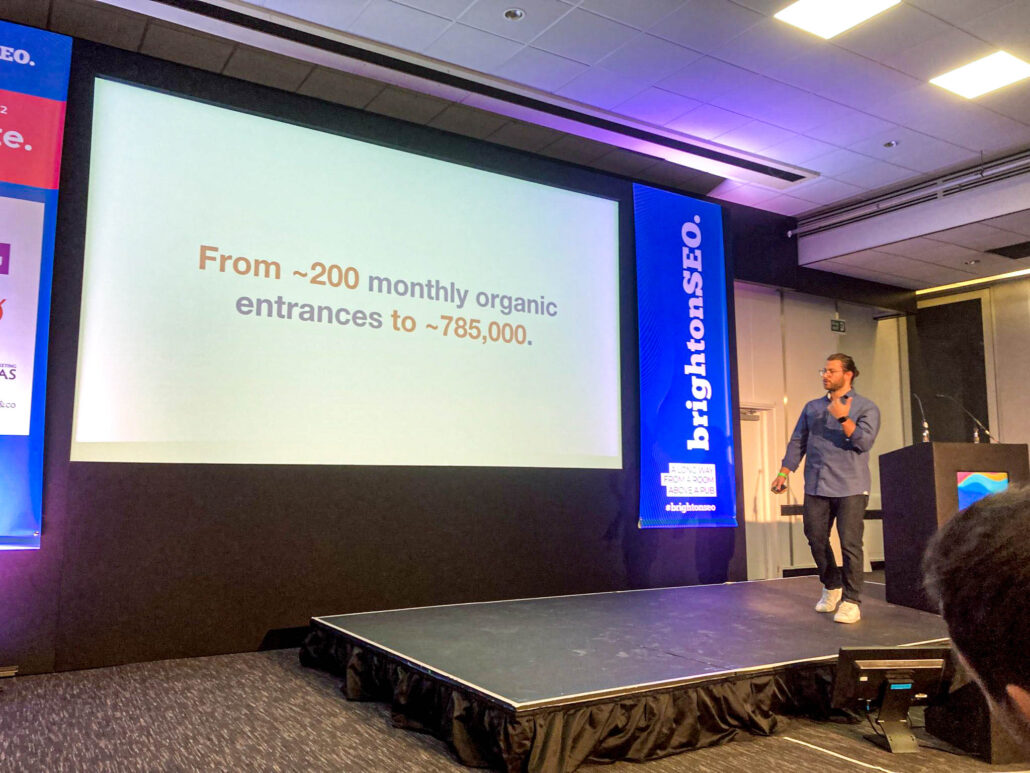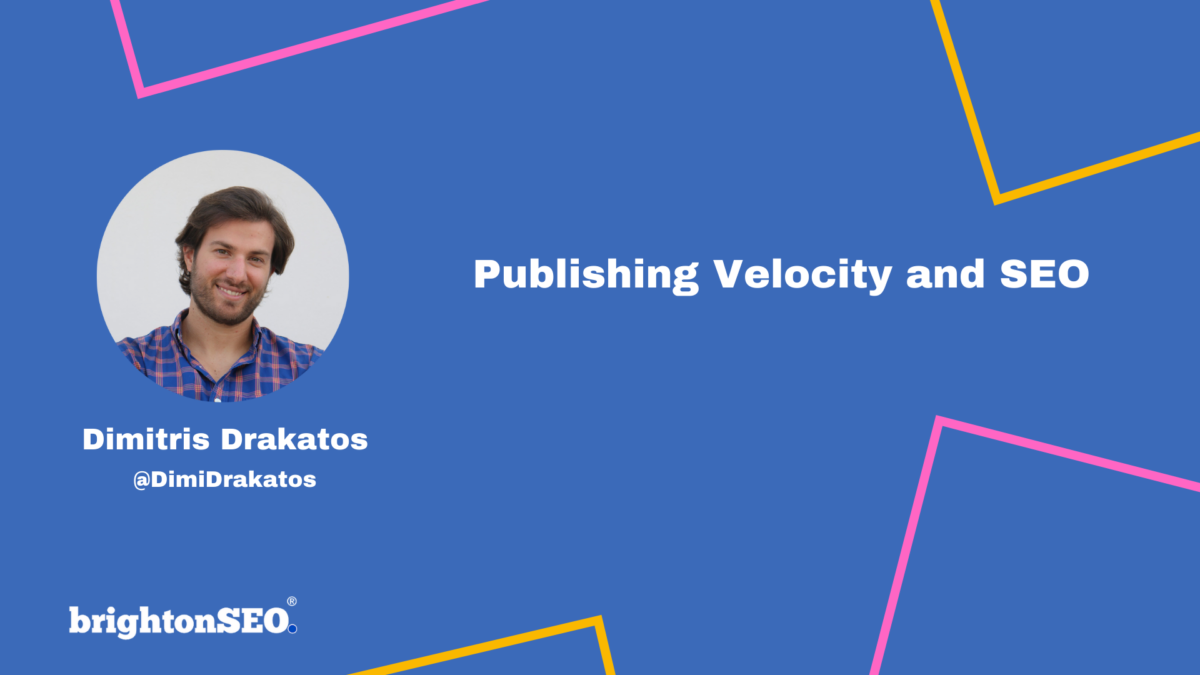What is Content Velocity?
Content velocity is the rate at which pages are created and published. The more original content you publish, the more likely your page will be seen as relevant by search engines.
Content velocity is based on the number of new pages that are published over a period of time. This metric is different from content’s rank or the number of social shares because it’s not just about the quantity of content – it also examines the quality of the content. New pages that are more relevant and better optimized than old ones will have a higher content velocity, translating to high rankings in Google searches.
What does content velocity have to do with SEO
Google’s ranking algorithm is heavily weighted in favour of fresh content. If you are looking to rank higher in search engine results pages you will need to publish new, quality content more often.
However, this is not an easy task for many small business SEOs who are unable to dedicate the time and resources needed to keep up with their competition. Luckily, there are a few tricks that will make it easier to generate new content on a regular basis.
8 Steps for Creating Web Content Faster
The challenge of writing content for your website can be daunting. From reading through all the research you’ve done to find a logical structure for your article, there are many steps involved in putting together a great piece of web content. That’s why we’re highlighting the simplicity and effectiveness of these 8 tips that will help you create web content faster and with less hassle.
How to write articles fast
The first step is to schedule your posts. You can do this by either setting up a calendar for yourself or scheduling them on social media sites like Facebook and Instagram. Once you have scheduled your posts, it is time to come up with ideas for content. You can use a notebook or voice recorder to brainstorm ideas and then go through the list every day to see what could work for that day’s post.
- Step 1: Content Concept: The first step of the process is to come up with a content concept. You want to do this upfront so that you know what you’re going to be writing about and how much time and resources it will take. This will let you create an outline for your post before you start writing it.
- Step 2: Choosing Your Topic: Select a topic that is wide and deep, such as “social media”, “what is SEO’ etc. This will allow you to create more content on the subject over time.
- Step 3: Brainstorming for Content Ideas: Brainstorming is an excellent method for generating content ideas. The key here is to list as many different ideas as possible, without judging which idea is better than the other. It should also be noted that brainstorming doesn’t require you to write anything down at first, but always end with a sentence or two about each idea that sums it up.
- Step 4: Generating Ideas For Headlines and Subheadings: Subheadings can be your best friend when you need to write web content in a hurry. They provide a framework for your article and help you to organize the information in a logical manner. If you find yourself struggling to come up with ideas, then look at similar articles that you’ve created or found on the Internet. The wording and organization of the headlines and subheadings will give you some great ideas for your own.
- Step 5: Writing The Content, One Section at A Time: Once you’ve completed a rough outline, decide on a page layout and divide your content into sections. For example, if you’re doing an article on the benefits of eating healthy every day, you might have sections for “How eating healthy can help with weight loss,” “6 easy ways to eat healthier,” and “A list of 20 quick, healthy recipes.”
- Step 6: Preparing To Write: Make sure that you have everything that you need to write. If you are writing an email, make sure that your email software is open and the recipient’s address is filled in. If you are writing a blog post, make sure your data source is opened and search terms are highlighted.
- Step 7: Refining and Editing Your Written Content: This is the step you’ve been waiting for. It’s time to go back and edit your content. Resist the urge to start this step until you’ve completed all the steps before it. Now, with all your content written out, you can come back and focus on each section individually. Make sure there are no typos in any of the text and check for consistency within each paragraph. Pay particular attention to headings and subheadings – ensure that they’re formatted clearly and that there is a logical flow from one idea to another. If you followed these steps correctly, then editing should be quick and easy; if not, it will take a lot more time than necessary.
- Step 8: Proofreading Your Articles: Once you’ve completed your written piece, it’s important to proofread it. At this stage, you should go through the content again, checking for any errors or missing pieces. You should also make sure that your grammar is correct and double-check your citations and references list.
Why is content velocity so important for SEO?
Google uses content velocity to determine how often your website is updated. It prefers sites with regular updates because it knows that these are websites that are more likely to have fresh content. Content velocity also helps Google discover new pages that are linked to your site. If you don’t update your site regularly, chances are Google won’t be able to find it in the search engine results pages.
Techniques to accomplish better content velocity
There’s no one-size-fits-all strategy for achieving high content velocity. To increase your content velocity, first, you need to analyse the reasons why your website is not ranking well in Google. The higher you can rank, the more traffic you’ll be able to achieve. Sometimes this comes down to producing better content. Other times it’s about making sure that Google knows about all of the pages on your site, which means creating new content and/or sharing articles with other websites.
About this talk
In this talk, Dimitris Drakatos will go through a very interesting topic on how publishing velocity can contribute to SEO.
Publishing new, fresh content about your business is one of the best ways to increase your Google rankings and reach your target audience – but doing so too quickly without proper planning can actually hurt you.
How you can build a blog and a solid content plan from scratch and using extensive KW research and KW clustering, quick solutions (external & internal writers, stock images website & Canva for editing them) and drive 100,000+ organic visits per month in 7 months purely non-branded.
Using publishing velocity (delivering more than 200 articles per month) can close the big gap between your website and your main search competitors that have been doing this for years while at the same time you increase your search potential dramatically.
Who is Dimitris Drakatos
Formerly at UK fintech unicorn Revolut, since October 2020 Dimitris Drakatos has been leading all the SEO and ASO work at startup Peanut, an app for connecting like-minded women throughout fertility and motherhood.
A passionate digital marketer and SEO manager with more than eight years of experience across both inbound and digital marketing. He has worked for several successful companies, like Revolut, scaling their digital presence.

About BrightonSEO
BrightonSEO – is a major search marketing event in the UK. One of our favourite events of the year, This is a superb conference for search marketing professionals, novice or expert. BrightonSEO is a chance to learn from some of the best minds in search, and then rub shoulders with them at one of the friendliest, and largest, gatherings of Digital Marketers in Europe.


Leave a Reply